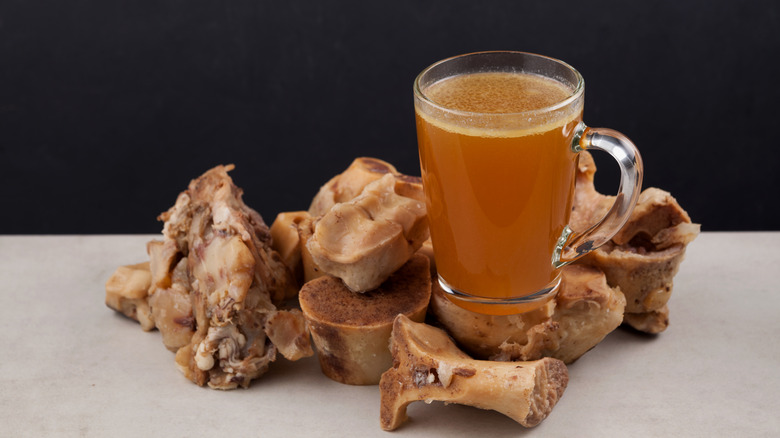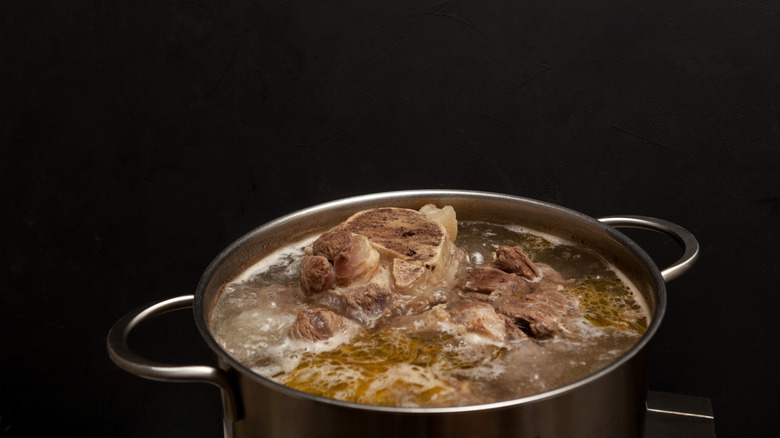Why It's A Bad Idea To Store Bone Broth Right After It Finishes Cooking
Most of us live by the theory that refrigerating food helps it last longer. However, it turns out that some foods don't need to be refrigerated, as long as you store them in the proper moisture and temperature conditions. A surprising number of foods taste better when kept at room temperature, including fruits like peaches and plums that will ripen better on the counter (per Farmers' Almanac). And certain foods can be left out overnight, such as bread, pies (without cream or custard fillings), salted butter, vinegar-based hot sauces, honey, pickles, and hard cheeses (via Insider).
It is common knowledge that you must refrigerate cooked food to prevent bacterial growth and reduce the risk of foodborne illness. However, some people are unaware of how to store food in the refrigerator properly. Many keep dairy products on the refrigerator door without knowing that temperature fluctuations due to regular opening and closing can hasten the process of spoilage.
While keeping cooked food on the counter for too long is never recommended, you should let hot food, including just-cooked bone broth, cool before placing it in the refrigerator.
Cool the broth in phases
People sometimes make common mistakes while preparing their bone broth, such as not blanching the bones, skipping the roasting step, or adding too many ingredients. But transferring a hot bone broth straight to the fridge is a big no-no. When you immediately place hot bone broth directly into a refrigerator, it will not have enough time to cool properly, and that enables potential pathogens to grow (per Michigan State University).
You should ensure that bone broth keeps out of the Temperature Danger Zone (between 40 degrees Fahrenheit and 140 degrees Fahrenheit), at which point dangerous bacteria such as salmonella, E.coli, and campylobacter can grow more rapidly. Moreover, refrigerating hot bone broth immediately can increase the temperature of surrounding foods, upping the risk of foodborne illness. You can use an ice water bath to quickly and safely drop the food temperature, according to the Center for Foodborne Illness, Research and Prevention.
The USDA recommends dividing large dishes into small containers before refrigeration, to reduce the cooling time.

